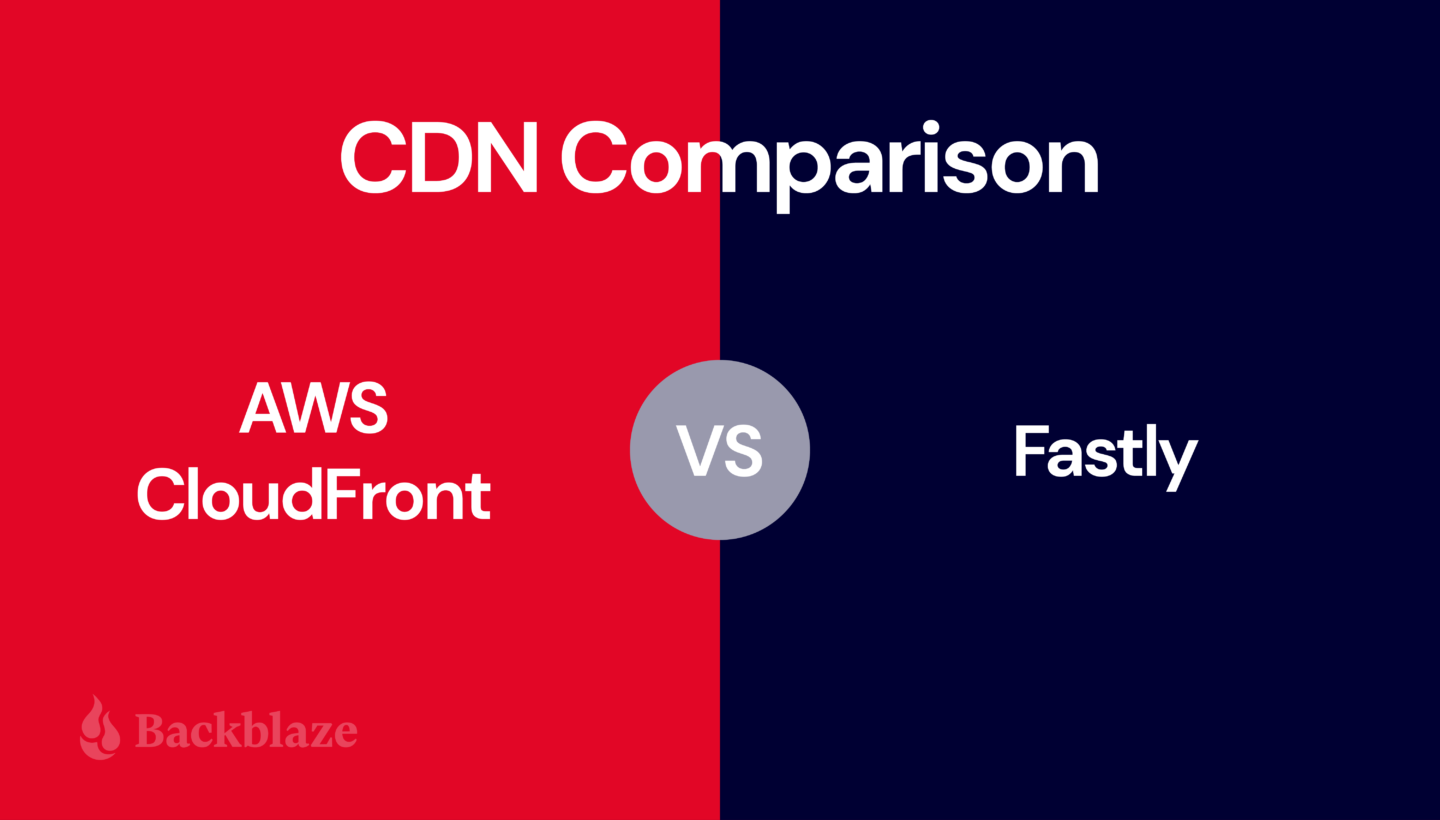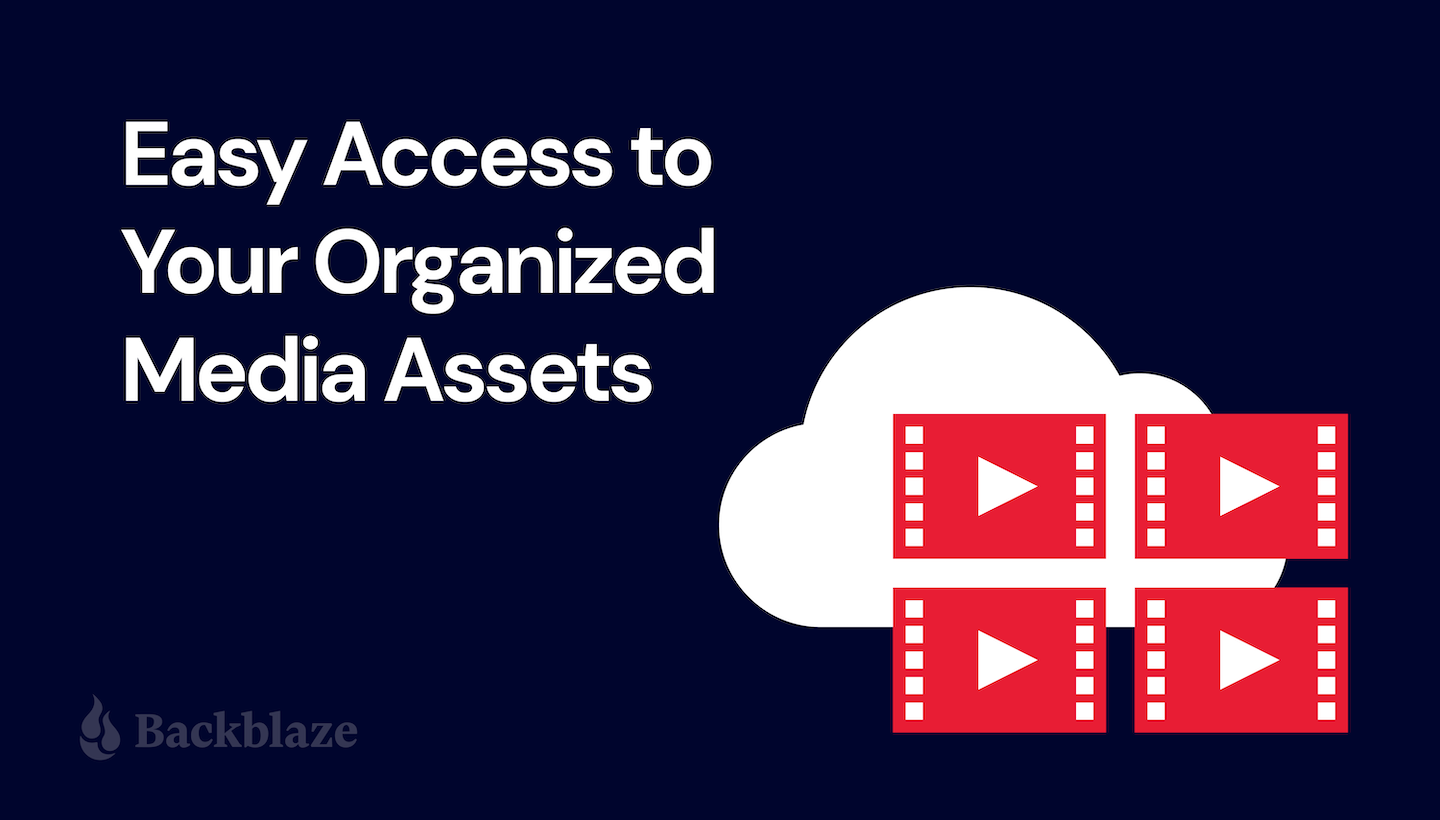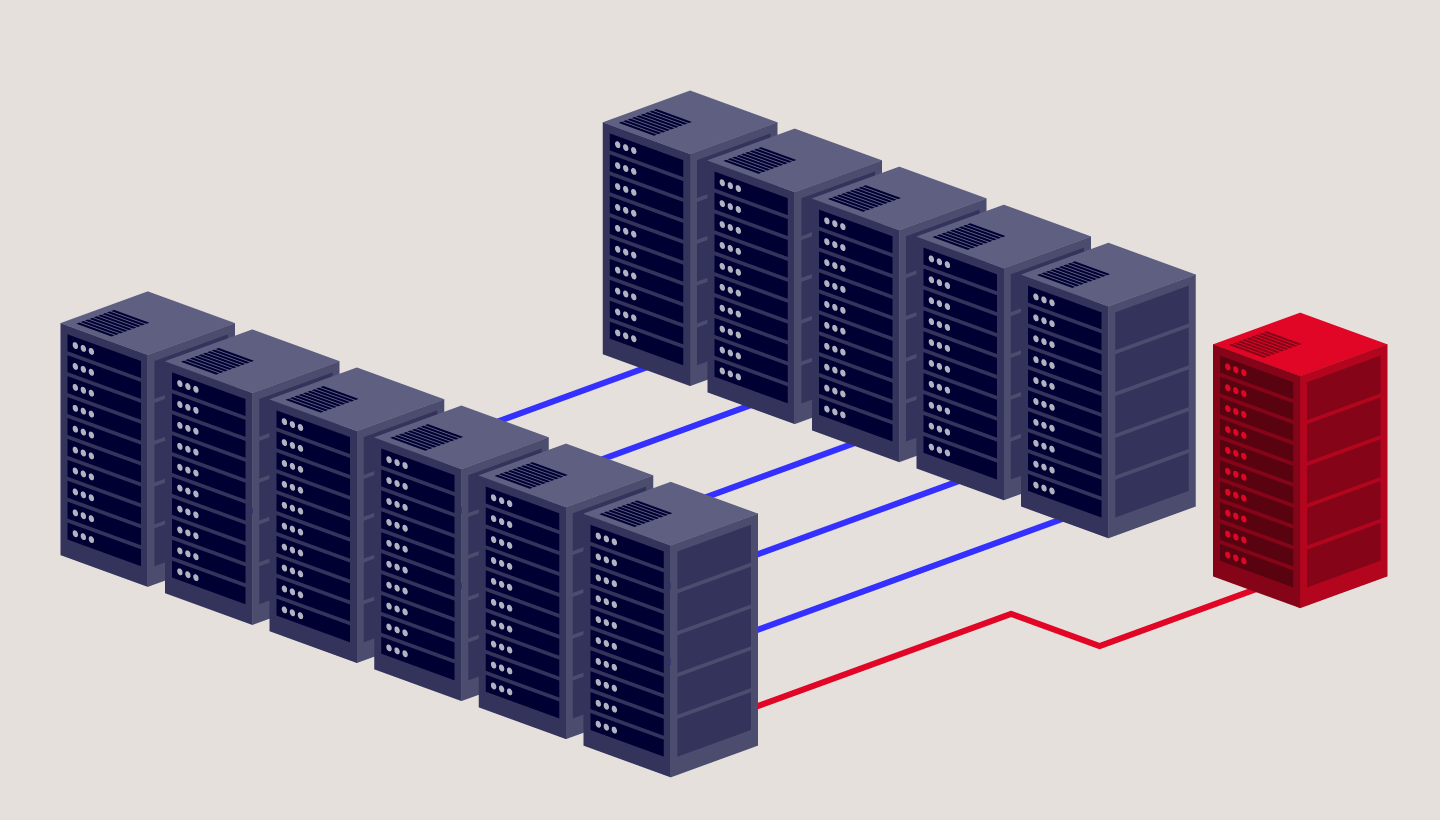
As a leading specialized cloud platform for application storage, we work with a variety of content delivery network (CDN) providers. From this perch, we get to see the specifics on how each operates. Today, we’re sharing those learnings with you by comparing Fastly and AWS CloudFront to help you understand your options when it comes to choosing a CDN, including how their networks, features, and bandwidth fees stack up.
Editor’s Note
We give more ink to Fastly than AWS CloudFront in this comparison because we’re in favor of supporting independent cloud providers that challenge the hyperscalers. So, full transparency: yes, we partner with Fastly, but no, this post is not paid or sponsored in any way. That being said, there are use cases where AWS CloudFront is the better choice. Do you have a preference? Let us know in the comments.What Is a CDN?
If you run a website or a digital app, you need to ensure that you are delivering your content to your audience as quickly and efficiently as possible to beat out the competition. One way to do this is by using a CDN. A CDN caches all your digital assets like videos, images, scripts, style sheets, apps, etc. Then, whenever a user accesses your content, the CDN connects them with the closest server so that your items load quickly and without any issues. Many CDNs have servers around the globe to offer low-latency data access and drastically improve the responsiveness of your app through caching.
Before you choose a CDN, you need to consider your options. There are dozens of CDNs to choose from, and they all have benefits and drawbacks. Let’s compare Fastly with AWS CloudFront to see which works best for you.
CDN Use Cases
Before we compare these two CDNs, it’s important to understand how they might fit into your overall tech stack. Here are some everyday use cases for a CDN:
- Websites: If you have a video- or image-heavy website, you will want to use a CDN to deliver all your content without any delays for your visitors.
- Web Applications: A CDN can help optimize your dynamic content and allow your web apps to run flawlessly, regardless of where your users access them.
- Streaming Video: Customers expect more from companies these days and will not put up with buffering or intermittent video streaming issues. If you host a video streaming service like Hulu, Netflix, Kanopy, or Amazon, a CDN can solve these problems. You can host high-resolution (8K) video on your CDN and then stream it to your users, offering them a smooth, gapless streaming experience.
- Gaming: If you are a “Call of Duty” or “Halo” fan, you know that most video games use high-resolution images and video to provide the most immersive gaming experience possible. Video game providers use CDNs to ensure responsive gameplay without any blips. You can also use a CDN to streamline rolling out critical patches or updates to all your customers without any limits.
- E-Commerce Applications: Online retailers typically use dozens of images to showcase their products. If you want to use high-quality images, your website could suffer slow page loads unless you use a CDN to deliver all your photos instantly without any wait.
Need for Speed (Test)
Website developers and owners use speed tests to gauge page load speeds and other aspects affecting the user experience. A CDN is one way to improve your website metrics. You can use various online speed tests that show details like load time, time to first byte (TTFB), and the number of requests (how many times the browser must make the request before the page loads).
A CDN can help improve performance quite a bit, but speed tests are dependent on many factors outside of a CDN. To find out exactly how well your site performs, there are dozens of reputable speed test tools online that you can use to evaluate your site, and then you can make improvements from there. Some of the most popular tools are:
Comparing Fastly vs. AWS CloudFront
Fastly, founded in 2011, has rapidly grown to be a competitive global edge cloud platform and CDN offering international customers a wide variety of products and services. The company’s flagship product is its CDN which offers nearly instant content delivery for companies like The New York Times, Reddit, and Pinterest.
AWS CloudFront is Amazon Web Service’s (AWS) CDN offering. It’s tightly integrated with other AWS products.
To best understand how the two CDNs compare, we’ll look at different aspects of each one so you can decide which option works best for you, including:
- Network
- Caching
- DDoS Protection
- Log streaming
- Integrations
- TLS Protocols
- Pricing
Network
CDN networks are made up of distribution points, which are network connections (servers) that allow a CDN to deliver content instantly to users anywhere.
Fastly
Fastly’s network is built fundamentally differently than a legacy CDN. Rather than a wide-ranging network populated with many points of presence (PoPs), Fastly built a stronger network based on fewer, more powerful, and strategically placed PoPs. Fastly promises 233Tbps of connected global capacity with its system of PoPs (as of 9/30/2022).
AWS CloudFront
AWS CloudFront doesn’t share specific capacity figures in terms of terabits per second (Tbps). They keep that claim somewhat vague, advertising “hundreds of terabits of deployed capacity.” But they do advertise that they have roughly 450 distribution points in 90 cities in 48 countries.
Our Take
At first glance, it might seem like more PoPs means a faster, more robust network. Fastly uses a useful metaphor to explain why that’s not true. They compare legacy PoPs to convenience stores—they’re everywhere, but they’re small, meaning that the content your users are requesting may not be there when they need it. Fastly’s PoPs are more like supermarkets—you have a better chance of getting everything you need (your cached content) in one place. It only takes a few milliseconds to get to one of Fastly’s PoPs nowadays (as opposed to when legacy providers like AWS CloudFront built their networks), and there’s much more likelihood that the content you need is going to be housed in that PoP already, instead of needing to be called up from origin storage.
Caching
Caching reduces the number of direct requests to your origin server. A CDN acts as a middleman responding to requests for content on your behalf and directing users to edge caches nearest to the user. When a user calls up your website, the CDN serves up a cached version located on the server closest to them. This feature drastically improves the speed and performance of your website.
Fastly
Fastly uses a process of calculating the Time to Live (TTL) with its caching feature. TTL is the maximum time Fastly will use the content to answer requests before returning to your origin server. You can set various cache settings like purging objects, conditional caching, and assigning different TTLs for cached content through Fastly’s API.
Fastly shows its average cache hit ratio live on its website, which is over 91% at the time of publication. This is the ratio of how many content requests the CDN is able to fill from the cache versus the total number of requests.
Fastly also allows you to automatically compress some file types in gzip and then cache them. You can modify these settings from inside Fastly’s web interface. The service also includes support for Brotli data compression via general availability as of February 7, 2023.
AWS CloudFront
AWS CloudFront routes requests for your content to servers holding a cached version, lessening the burden on your origin container. When users visit your site, the CDN directs them to the closest edge cache for instantaneous page loads. You can change your cache settings in AWS CloudFront’s backend. AWS CloudFront supports compressed files and allows you to store and access gzip and Brotli compressed objects.
Our Take
Fastly does not charge a fee no matter how many times content is purged from the cache, while AWS CloudFront does. And, Fastly can invalidate content in 150 milliseconds, while AWS CloudFront can be 60–120 times slower. Both of these aspects make Fastly better with dynamic content that changes quickly for customers, such as news outlets, social media sites, and e-commerce sites.
DDoS Protection
Distributed denial of service (DDoS) attacks are a serious concern for website and web app owners. A typical attack can interrupt website traffic or crash it completely, making it impossible for your customers to reach you.
Fastly
Fastly relies on its 233Tbps+ (as of 9/30/2022) of globally-distributed network capacity to absorb any DDoS attacks, so they don’t affect customers’ origin content. They also use sophisticated filtering technology to remove malicious requests at the edge before they get close to your origin.
AWS CloudFront
AWS CloudFront is backed by comprehensive security technology designed to prevent DDoS and other types of attacks. Amazon calls its DDoS protection service AWS Shield.
Our Take
Fastly’s next gen web application firewall (WAF) actively filters the correct traffic. More than 90% of their customers use the WAF in active full blocking mode whereas across the industry, only 57% of customers use their WAF in full blocking mode. This means the Fastly WAF works as it should out of the box. Other WAFs require more fine-tuning and advanced rule setting to be as efficient as Fastly’s. Fastly’s WAF can also be deployed anywhere—at the edge, on-premises, or both—whereas most AWS instances are cloud hosted.
Log Streaming
Log streaming enables you to collect logs from your CDN and forward them to specific destinations. They help customers stay on top of up-to-date information about what’s happening within the CDN, including detecting security anomalies.
Fastly
Fastly allows for near real-time visibility into delivery performance with real-time logs. Logs can be sent to 29 endpoints, including popular third-party services like Datadog, Sumo Logic, Splunk, and others where they can be monitored.
AWS CloudFront
AWS CloudFront real-time logs are integrated with Amazon Kinesis Data Streams to enable delivery using Amazon Kinesis Data Firehose. Kinesis Data Firehose can then deliver logs to Amazon S3, Amazon Redshift, Amazon Elasticsearch Service, as well as service providers like Datadog, New Relic, and Splunk. AWS charges for real-time logs in addition to charging for Kinesis Data Streams.
Our Take
More visibility into your data is always better, and Fastly’s free real-time log streaming is the clear winner here with more choice of endpoints, allowing customers to use the specialized third-party services they prefer. AWS encourages staying within the AWS ecosystem and penalizes customers for not using AWS services, namely their S3 object storage.
Integrations
Integrations allow you to extend a product or service’s functionality through add-ons. With your CDN, you might want to enhance it with a different interface or add on new features the original doesn’t include. One popular tool we’ll highlight here is Terraform, a tool that allows you to provision infrastructure as code (IaC).
Terraform
Both Fastly and AWS CloudFront support Terraform. Fastly has detailed instructions on its website about how to set this up and configure it to work seamlessly with the service.
Amazon’s AWS CloudFront allows you to integrate with Terraform by installing the program on your local machine and configuring it within AWS CloudFront’s configuration files.
The Drawbacks of a Closed Ecosystem
It’s important to note that AWS CloudFront, as an AWS product, works best with other AWS products, and doesn’t exactly play nice with competitor products. As an independent cloud services provider, Fastly is vendor agnostic and works with many other cloud providers, including AWS’s other products and Backblaze.
TLS (Transport Layer Security) Protocols
TLS or transport layer security (formerly known as secure sockets layer (SSL)) is an encryption device used to protect website data. Whenever you see the lock sign on your internet browser, you are using a website that is protected by an TLS (HTTPS).
Fastly assigns a shared domain name to your CDN content. You can use the associated TLS certificate for free or bring your own TLS certificate and install it. Fastly offers detailed instructions and help guides so you can securely configure your content.
Amazon’s AWS CloudFront also assigns a unique URL for your CDN content. You can use an Amazon-issued certificate, the default TLS certificate installed on the server or use your own TLS. If you use your own TLS, you must follow the explicit instructions for key length and install it correctly on the server.
Pricing
Fastly
Fastly offers a free trial which includes $50 of traffic with pay-as-you-go bandwidth pricing after that. Bandwidth pricing is based on geographic location and starts at, for example, $0.12 per GB for the first 10TB for North America. The next 10TB is $0.08 per GB, and they charge $0.0075 per 10,000 requests. Fastly also offers tiered capacity-based pricing for edge cloud services, starting with its Essential product for small businesses, which includes 3TB of global delivery per month. Their Professional tier includes 10TB of global delivery per month, and their Enterprise tier is unlimited. They also offer add-on products for security and distributed applications.
AWS CloudFront
AWS CloudFront offers a free plan including 1TB of data transfer out, 10,000,000 HTTP or HTTPS requests, and 2,000,000 functions invocations each month. However, customers needing more than the basic plan will have to consider the tiered pricing based on bandwidth usage. AWS CloudFront’s pricing starts at $0.085 per GB up to 10TB in North America. All told, there are seven pricing tiers from 10TB to >5PB.
Our Take
When it comes to content delivery, AWS CloudFront can’t compete on total cost of ownership. Not only that, but Fastly’s pay-as-you-go pricing model with only two tiers is simpler than AWS CloudFront’s pricing with seven tiers. As with many AWS products, complexity demands configuration and management time. Customers tend to spend less time getting Fastly to work the way they want it to. With AWS CloudFront, customers also run the risk of getting locked in to the AWS ecosystem.
Our Final Take
Between the two CDNs, Fastly is the better choice for customers that rely on managing and serving dynamic content without paying high fees to create personalized experiences for their end users. Fastly wins over AWS CloudFront on a few key points:
- More price competitive for content delivery
- Simpler pricing tiers
- Vendor agnostic
- Better caching
- Easier image optimization
- Real-time log streaming
- More expensive, but better performing out-of-the-box WAF
Using a CDN with Cloud Storage
A CDN can greatly speed up your website load times, but there will still be times when a request will call the origin store. Having reliable and affordable origin storage is key when the cache doesn’t have the content stored. When you pair a CDN with origin storage in the cloud, you get the benefit of both scalability and speed.




